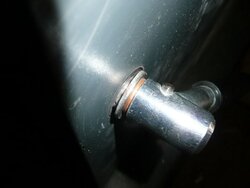Well after 3 days of getting gassed out of my shop I had to flip my silicone door gasket. It lasted almost 2 seasons I ran out of adjustment on my hinges and the fumes were leaking out of the upper part of the door. The silicone was all dried out and cracked. I hope it fixed it for now. I will know tomorrow when I fire it up if it worked.
Rob
Rob



 !! I might have a little room to tighten them up but not sure. Anyone find a source for use to skip the middle man on new gaskets?
!! I might have a little room to tighten them up but not sure. Anyone find a source for use to skip the middle man on new gaskets?